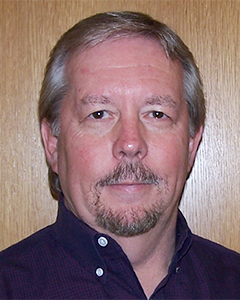
John McCARREY (USA)
Dr. McCarrey received his Bachelors degree in Animal Science and his Masters and PhD degrees in Genetics, all from the University of California, Davis. He did a postdoctoral fellowship with Dr. Susumu Ohno at the City of Hope in Duarte, California. He then joined the faculty in Reproductive Biology at the Johns Hopkins School of Public Health. In 1991 he moved to the Department of Genetics at the Southwest Foundation for Biomedical Research in San Antonio, Texas, and in 2001 he assumed his present position as Professor of Cell & Molecular Biology at the University of Texas at San Antonio. He holds joint appointments in the Departments of Obstetrics and Gynecology and Cellular & Structural Biology at the University of Texas Health Science Center at San Antonio, and in the Department of Comparative Medicine at the Southwest Foundation for Biomedical Research. He is also an affiliate scientist of the Southwest National Primate Research Center in San Antonio, and Director of the San Antonio Cellular Therapeutics Institute. In 2012, Dr. McCarrey was named the Robert and Helen Kleberg Distinguished Chair in Cellular & Molecular Biology.
Dr. McCarrey’s research interests focus on the development, differentiation and function of mammalian germ cells and stem cells. He discovered the first example of a functional, germ-cell-specific retroposon in the human genome. He has published several papers on mechanisms that regulate germ-cell-specific gene expression in mammals. He has also published several papers on mechanisms of epigenetic programming that function during germ cell development and gametogenesis, and in stem cells. Additional research interests include mechanisms governing X-chromosome activity in germ cells and early embryos, mechanisms governing genetic integrity in germ cells and stem cells, the effects of cloning and assisted reproductive technologies on genetic integrity, and the development of nonhuman primate model systems for studies of stem cell research and regenerative medicine. Recently he has focused on mechanisms involved in the induction of epimutations by environmental disruptions including the use of assisted reproductive technologies, and the extent to which these are reprogrammed in the mammalian germ line. His newest interest is in the development of foundational spermatogonial stem cells in the mammalian testis.
Abstract
The Potential for ART to Introduce Epigenetic Abnormalities (Epimutations)
The use of assisted reproductive technologies (ART) has become increasingly common worldwide and is now responsible for up to 7% of children born in developed countries. Multiple reports have suggested that ART-conceived children are more likely to develop rare epigenetic disorders such as Beckwith-Wiedemann Syndrome or Angelman Syndrome, both of which involve dysregulation of imprinted genes. Disruptions of non-imprinted regions of the genome have also been reported. Such disruptions in normal epigenetic programming, termed “epimutations,” have the potential to predispose a number of different disease states or abnormalities that can be manifest as either congenital defects or as adult-onset diseases. In some cases, such induced epimutations can be transmitted to subsequent generations, even in the absence of any ongoing exposure to the initial inductive effect. Multiple facets of the ART process, including gonadotropin stimulation (superovulation), embryo culture and embryo transfer have been implicated in the induction of epimutations.
Epigenetics is the study of mitotically or meiotically heritable changes in gene expression that are not due to changes in the underlying DNA sequence. Epigenetic programming is achieved by a combination of multiple marks and/or indicators including DNA methylation, histone modifications, chromatin accessibility, and non-coding RNAs. Differential epigenetic programming regulates embryonic development, morphogenesis, organogenesis, and cell-type specific differentiation. However, epigenetic programming is labile in that it is reversible, and varies as a function of cell type, developmental stage, disease states and/or aging. Thus, the epigenome is relatively susceptible to disruption induced by abnormalities in the environment, including those associated with ART procedures.
This presentation will review i) basic mechanisms of epigenetic programming, ii) the manner in which this programming normally influences gene expression, iii) evidence for the potential of ART procedures to disrupt normal epigenetic programming, iv) the manner in which parental epigenetic programming inherited via the gametes is normally erased and then reset during preimplantation development and germline development. Possible approaches to detect, monitor and/or prevent the induction of epimutations during the use of ART will be discussed.
